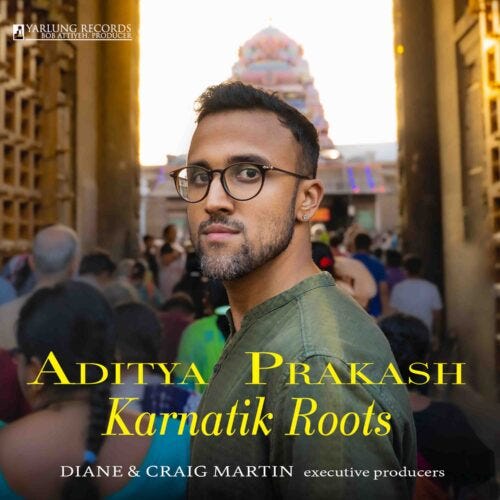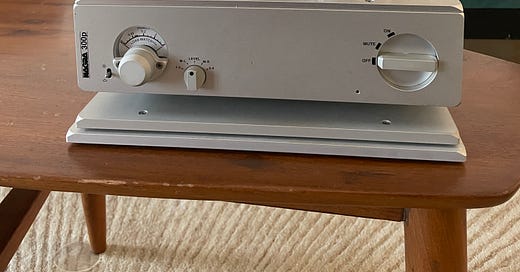Part 2: I sold my Nagra ultimate 300b amplifier. Why?
The glass-half-full vs glass-half-empty audio system
There’s good sound sound, and then there’s good “music sound”; I have borrowed this phrase from one of Art Dudley’s reviews,[1] but this phrase completely describes my decision to switch from Nagra to Shindo, and why ultimately I sold my Nagra 300p amplifier, an amp I had been fantasising about since my 20s — when I was broke-ass audiophile.
With Nagra and its heritage of professional sound recordings, I was getting all the sound: Details, resolution, transparency, crystalline clean sound like the spring waters of Fiji[2]. All the sounds in the recording were faithfully reproduced in my living room; especially after switching to the stock tubes[3] it was a brilliant all-Nagra system: The Nagra 300p amplifier, Nagra Jazz preamp, Nagra Tube DAC. It looked like a million dollars, sounded like a million dollars, but again something was off. And after months of audiophile nervosa and anxiety and hair-pulling, I realised it came down to three issues.
Firstly, I have known for sometime now[4] that I am as much a music lover as I am an audiophile. Perhaps a hair’s breadth more a music lover than an audiophile —so the music comes first. I would vastly prefer to listen to a mediocre recording of a world-class musician to a world class recording of a mediocre musician. But in my Nagra system, my favourite CDs were no longer listenable. I could only enjoy well-recorded jazz music. I like Jazz, I used to love Jazz, I was a Jazz-head and a card-carrying member of SFJAZZ but these days I like Indian classical music better. I want to listen to Ustaad Zakir Hussein, Ali Akbar Khan, Vilayat Khan, Nikhil Banerjee, MS Subbulakshmi, Malini Rajurkar, Faiyaz Khan etc etc etc — none of their music is available on high-res or DSDs; and I don’t want to listen to mediocre, orientalised, fusion-music that is available on NativeDSD or HDTracks under the name of Indian music or worse “World Music”.

The second issue I realised after a few months with the Nagra system is that it was a glass half-empty kind of a system. Or what you call in audiophile terms, a “revealing” system. Now a “revealing” component is a compliment in audiophile circles that puts a spotlight on all the weaknesses in your home system — it means that the component is of the highest grade. But if a component needs the perfect conditions —pure power supply, high-end cables, the perfect room size, room treatment, room acoustics, perfect recording — for it to sound good then that equipment doesn’t belong in a home system, it needs to be in recording studio.
I have no problem with high end gear sounding “revealing” and transparent, but it should not be finicky and demand perfection on every path of execution before it can sound good, it should be tolerant and let you enjoy lesser recordings, imperfect room acoustics, it should dig deep into the heart of the music, not focus on getting the perfect sound or every bit/groove in the recording at the expense of the larger picture. My Shindo/Accuphase combo—had just as Highend, just as sophisticated, just as high resolution (more actually) than the Nagra but it was more forgiving, a glass-half-full kind of approach: “Sure, the CD recording is not great, but, here, listen to the music, it’s transcendental!” Its focus was on the music not the shortcomings of the recording or the room.
In hi-fi systems, just as with people, it’s more fun to hangout with glass-half-full kind.
Finally, it comes down to the three Ts of music reproduction: tone, touch, and timing. For a classical music listener —like me — these three components are far more important some other audiophile qualities like soundstaging, air, transparency, deep “thumping” bass. I like my music to be recreated bottom (frequency) up, not top-down, musical not analytical, natural not sterile, rambunctious and alive not clinical and dressed-up. The Shindo did that for me, it made music alive and vibrant.
For the first time a sitar in my living room sounded like a sitar in the concert, I don’t know if that information was on the CD and the Nagra couldn’t dig it out, or it was the magic of Shindo’s tone that brought the sitar alive, but I was glad that the 100s of sitar CDs I owned would now be played and replayed for years to come, instead of gathering dust in the cabinet.
Don’t get me wrong — the Shindo/Accuphase wasn’t cuddly, warm and over-syrupy and slow sounding, it was high resolution, warm, transparent, and alive; bottom to top frequency all represented but all in just a musical fashion with the three Ts given more importance than just the sounds encoded in the bits and bytes.
I realised I had come to a full circle, about a decade ago, I had decided Shindo would be my final system, but then shit happened[5] (I moved to India from the US) and I was back in a very expensive audio merry go around, and finally almost a decade later, I rediscovered Shindo. I am guessing this would be end of my journey, but life always has a way to surprise you. A new journey awaits with trying to acquire — increasingly hard to find —Shindo components. It’s gonna be fun (not really).
[1] Despite fervent googling and going through some 20 reviews on Stereophile, I am unable to find the exact article to put in a proper reference link.
[2] At least that’s what the Fiji Water marketing says. Wonder if the locals have access to their own aquifers or if it’s all exported (like our Alphonso mangoes used to be available in Dubai in 1990s before they reached our homes).







